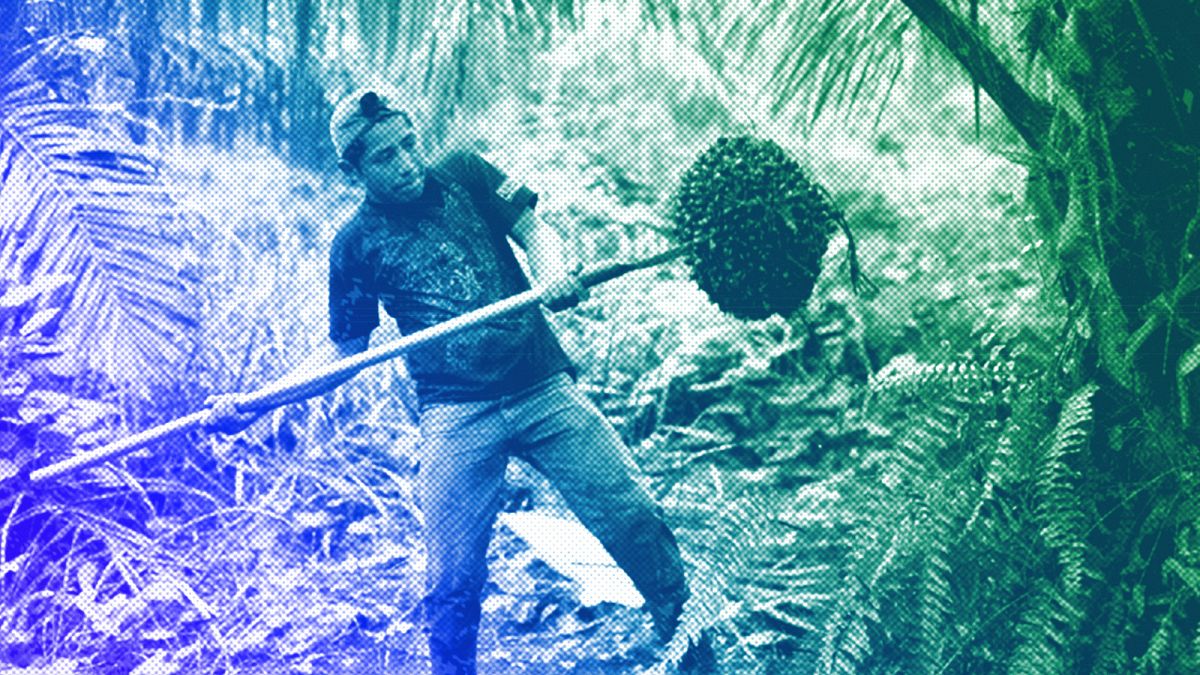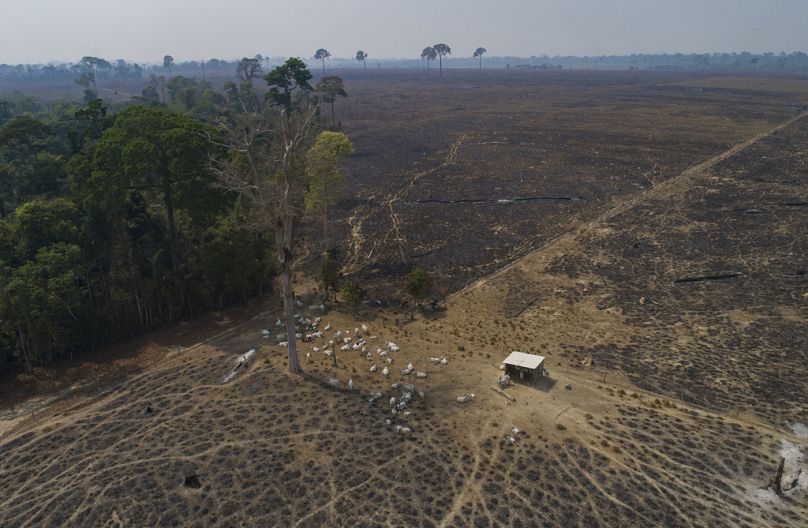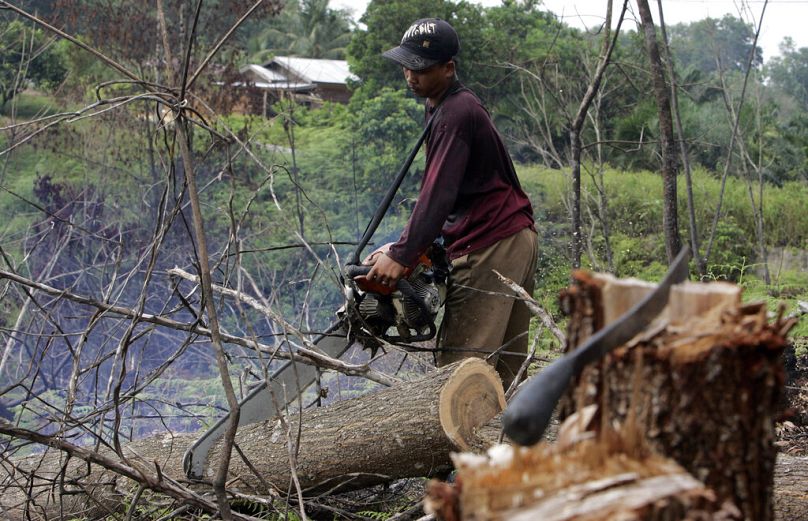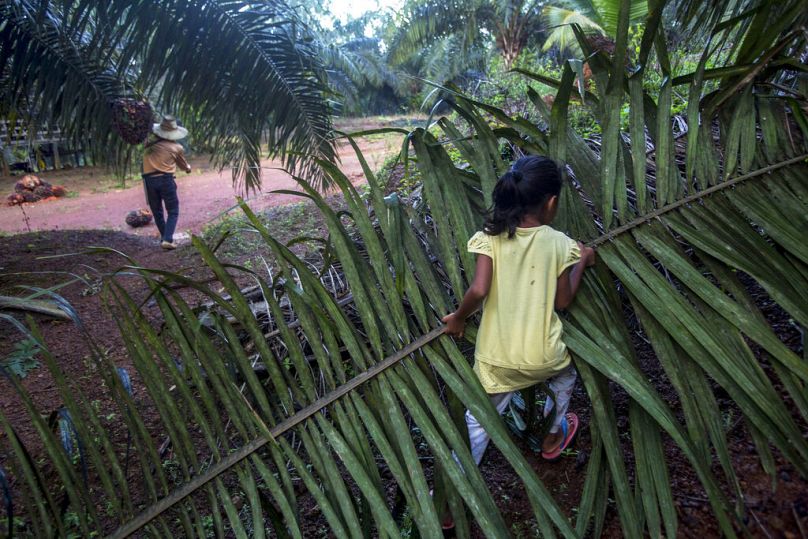There are several possible explanations for the apparent contradiction between regulatory pressure to narrow on the lowest compliance risks and companies’ willingness to invest in some higher-risk landscapes, Matthew Spencer writes.
Something strange is happening in the palm oil sector.
Despite the impending enforcement of the EU Deforestation Regulation (EUDR), numerous companies are intensifying their investment in landscape initiatives.
This phenomenon is surprising as many of us feared that the EUDR would push companies away from sourcing from higher forest-risk jurisdictions.
Some companies are segregating mills and refineries for Europe and focussing on sourcing from plantations distant from remaining forest, and away from smallholder supply.
But others are making new investments in landscape initiatives in Indonesia and Malaysia which include many thousands of small farmers.
A report released recently by the Tropical Forest Alliance (TFA), CDP and Proforest identified a total of 37 landscape and jurisdictional approaches supported by companies and focused on palm production, surpassing any other commodity sector.
It reflects IDH’s experience in Aceh, where stalwart partners like Unilever, Pepsico and Musim Mas are now being joined by a growing roster of buyers and traders including Mars, Apical, GAR and Mondelēz.
What explains this apparent contradiction between regulatory pressure to narrow on the lowest compliance risks and companies’ willingness to invest in some higher-risk landscapes?
There are several possible explanations.
Deforestation risk can fall quickly in the best landscape initiatives
The evidence for how landscape approaches can reduce deforestation is growing.
In Mato Grosso in Brazil, which has had a state-wide jurisdictional approach for eight years, Amazon deforestation barely increased under the Bolsonaro government, in contrast to many other states in the Legal Amazon which saw a big jump.
In Aceh Tamiang, Indonesia, deforestation fell to just 30 hectares in 2021 from over 400 hectares in previous years as a coordinated deforestation alert and action plan took effect.
The success of the landscape coalition in Aceh Tamiang is now inspiring new partnerships in other forest-risk districts in the Aceh buffer zone around the Leuser Ecosystem.
Also, smallholders are the best hope for growing palm oil supply. Palm is currently described by traders as a "sellers’ market" with surging demand in Asia and many mills operating under capacity.
There is limited room to grow supply from plantations in Malaysia or Indonesia, given their forest protection policies.
This creates a business case for companies to invest in the growth of independent small farmer productivity, and landscape initiatives allow them to do this in coordination with other business and farmer groups.
Jurisdictional approaches to EUDR traceability are likely to be more cost-effective in smallholder-dominated sourcing areas
The costs of tracing forest risk commodity supply can be very high and can repeat every year as smallholders switch buyers.
One service provider estimates that costs are in the range of €6-14 per farm to compile and map geolocation and land title data.
This data is often already held by the government, so with backing from local authorities who are part of landscape agreements, these costs can be shared.
There is also the tantalising prospect of jurisdictional traceability being recognised by the EU if a verified deforestation-free area can compile geolocation data at the district level rather than physically trace commodities from the farm level through many layers of the local supply chain.
The Vietnamese government is backing an IDH pilot with ten coffee companies in the central highlands which will compare the costs of different approaches to traceability.
Social risks are impossible to manage without engaging in sourcing areas
Despite its name, the EUDR creates duties beyond deforestation. Imports must also "have been produced in accordance with the relevant legislation of the country of production".
What is more, it is only the first act of a blockbuster package of new European regulation which means risks will begin to converge in corporate reporting and legal requirements on business.
Forced labour is notoriously difficult to spot but is a real possibility in palm plantations reliant on migrant labour.
Child labour is common and impossible to manage without community consent.
Given that the burden of proof is on the importing business, there is increasing interest from big brands to see if landscape initiatives can address human rights and social risks.
Different responses to business risk?
It’s possible that we are seeing two distinct responses to corporate risk. The "let’s get this risk off the table" approach tries to remove deforestation risk in the quickest and cheapest way but doesn’t join the dots to other social or environmental risks that exist in "forest safe" sourcing areas.
The second "let’s tackle risks at the source" response manages down interlinked risk by engaging key stakeholders in sourcing areas, often via landscape initiatives.
Landscape initiatives don’t pretend to get rid of all social and environmental risks, but they do reduce them at source.
That’s why they form part of the risk management strategy of an increasing number of palm buyers and traders. It’s a good bet that existing landscape collaborations are where the best models of forest and farmer-positive palm sourcing and traceability will emerge.
Matthew Spencer is the Global Director of Landscapes at IDH — Sustainable Trade Initiative, established by the Dutch government in 2009 to help improve the sustainability of international supply chains.
At Euronews, we believe all views matter. Contact us at view@euronews.com to send pitches or submissions and be part of the conversation.



